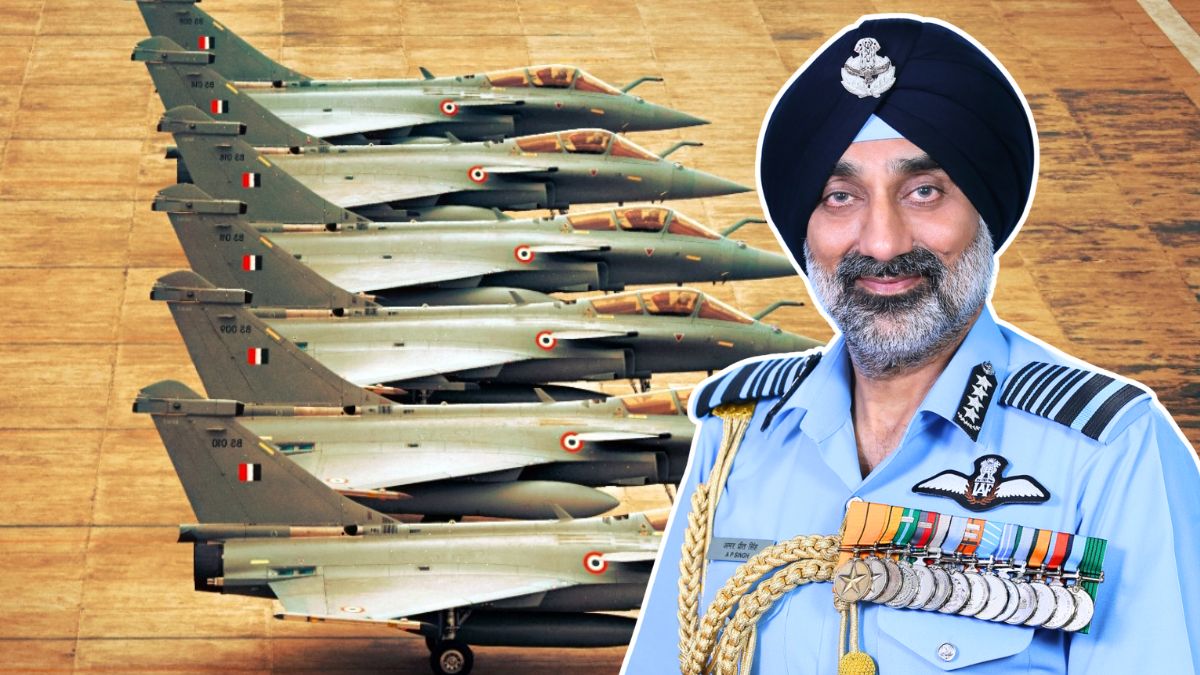As Western powers debate how to bring a “quick end” to the nearly four-year-old Russia-Ukraine war, Indian Air Force Chief Air Chief Marshal AP Singh has pointed to New Delhi’s playbook. Speaking in Delhi, Singh said global powers must “learn from India” on how to start and terminate military conflicts at the earliest possible opportunity.
“The main wars that are going on today, be it Russia-Ukraine or the Israel-Hamas conflict, are dragging on because no one is thinking about conflict termination. I think the world has to learn a lesson from India,” Singh remarked, addressing the Annual General Meeting of the Air Force Association on Friday (September 19, 2025).
How Operation Sindoor set an example?
Launched on May 7 in the aftermath of the deadly April 22 Pahalgam terror attack that killed 26 civilians, Operation Sindoor, demonstrated India’s approach – quick, precise, and with limited objectives. Over four days, the Indian Air Force destroyed nine terror launch pads and multiple airbases inside Pakistan and Pakistan-occupied Kashmir.
More than 100 terrorists were killed in the retaliatory strike.
By May 10, India agreed to a ceasefire, having achieved its objective crippling terror infrastructure without suffering notable damage. “If our objectives have been met, then why should we not terminate a conflict? Why should we carry on? Because any conflict has a lot of price which has to be paid,” Singh stressed.
Why did India stop when Pakistan was on backfoot?
Opposition leaders, including Congress’s Rahul Gandhi, questioned why the Modi government halted the offensive. Some even alleged that Prime Minister Narendra Modi had “surrendered” to pressure from US President Donald Trump, who first announced the ceasefire.
Singh rejected the criticism, clarifying that extending the conflict would have risked India’s economy, military preparedness, and progress. “Yes, Pakistan was on the back foot, no doubt. But our objective was anti-terrorism. We had to strike them. We had done that,” he said.
What was Pakistan’s response and how New Delhi countered it?
After India’s strikes, Pakistan launched drone and missile attacks targeting both military and civilian areas, escalating hostilities. But India’s air defence system thwarted the attacks with no major damage. In retaliation, Indian forces struck only terrorist and military targets, ensuring calibrated escalation.
PM Modi later warned Islamabad that any future misadventure would invite an even harsher response. “Operation Sindoor is still underway,” he declared.
Operation Sindoor: How it set global context?
While the Russia-Ukraine war has dragged on since February 2022, claiming thousands of lives and devastating infrastructure, Israel too has been locked in a prolonged battle with Hamas and other regional adversaries since October 2023. Despite US President Trump’s promises to broker peace, no breakthrough has been achieved.
Against this backdrop, India’s four-day conflict with Pakistan stands out as a rare example of decisive, short, and limited warfare. For Singh, it offers a simple lesson to the world: wars must not become endless.
